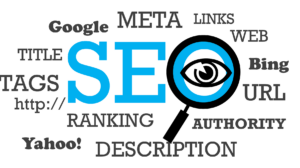Every website on this gigantic web wants to make it to the top of the search results, and one way to do it is through Search Engine Optimization.
Search engine optimization, when done correctly, can not only boost the traffic on your website but also portray it as a reliable resource, since people mostly trust something that ranks high.
If you have done enough research on what it takes to get to the top of the search results, then you may have realized that it takes a ton of work. Backlinks from good domain authority websites, keyword research, informative blogs, etc., but have you ever wondered – what are the most actionable techniques to improve your website’s ranking?
Here are 15 best SEO techniques you can consider to achieve a better ranking:
Optimizing Keywords Research
Keyword optimization plays a major role in every aspect of Internet Marketing from content strategy to link building to how your site content should be organized. When it comes to SEO, the success of your organic search efforts depends largely on how effective you are at discovering, researching, analyzing and selecting the right search engine keywords.
You should begin optimizing root keywords rather than drooling over long-tail keywords as they are no more effective. Root keywords are the middle of the pack search terms with higher search volume than long-tail. They are more competitive and may require more time and quality content to rank.
Moreover, you should consider investing time in proper keyword research before targeting any specific keywords. The Adword Keyword Research tool is one of the best tools available to target the right keyword. However, if you are comfortable with spending money on better keyword research and analytics, then SEMrush might be the right tool for you.
Pay attention to LSI Keywords
LSI keywords (latent semantic indexing) are simply keywords related to the topic your page is about. They include not only synonyms, but also other words that often occur when a certain topic is searched. The idea of LSI keywords is to naturally include them in your content for better visibility.
For example, if a website is talking about Apple, how do search engines know if the website is talking about the brand or the fruit? This is where search engines look for latent semantic indexed keywords to figure out what the page is specifically talking about.

Page Title and Meta Descriptions
The page title is an HTML element in the header of each web page. It is displayed at the top of your browser in the search engine results pages as the clickable headline and can be utilized by social networks when your content is shared. A meta description is an HTML element that provides a concise summary of a web page.

Page titles and Meta descriptions provide a first impression for a webpage and are important because they tell the search engines, and your users, the focus of each page. Well-written page titles and meta descriptions impact how likely a person is to click on the result (click through rate).
URL Optimization
SEO for your page URLs is important because keywords in the URL are a ranking factor and short and descriptive URLs can help with link building and user interaction. Like your visitors, search engines read a URL to get a clue about the content of the page.
Good URLs should include the target keyword, are less than 255 characters, short, descriptive and use hyphens to ‘-‘separate the different parts.
Here are some good examples:
- https://www.cdr-report.com/review-my-cdr/
- https://www.mediawiki.org/wiki/MediaWiki
- https://timesofindia.indiatimes.com/world
Page load speed
Users may leave a site if they have to wait awhile for each page to load. This will instantly affect the number of times your website page is viewed.
As per Smith, senior programmer at OnlineAssignmentwriting, “There are many ways to improve page load speed including using a caching plugin or making sure the code is clean and streamlined.” But, you must also optimize images, use as few plug-ins as possible and minimize redirects.
Layout and formatting
Proper formatting and a user-friendly layout can help improve user experience and make your content easy to scan and digest, so your readers will spend more time on your site and surf through your website’s information.
Here are some tips you can consider
- Use font size and typography that are easy to read.
- Use bold type and colors – sparingly and strategically – to call out important information and make the content easy to scan.
- Use short paragraphs and ample line spacing in between – nobody likes a wall of text.
- Use bulleted or numbered lists for clarity.
- Use techniques such as sliders, tabs, progressive layouts, structured grids, modal windows, rollover elements, accordions and mega drop-down-menus to organize content and add interactivity.
- Break up content into sections with subheads. Proper use of header tags that include keywords also helps improve SEO ranking.
High Quality Relevant Content
Dwell time is the amount of time visitors spend on your website, and it can affect SEO ranking. Based on research, content between 2,000 – 2,500 words seems to rank the highest in search engine results.
Although word count does not rule the SEO world – nobody will spend time reading something that is not helpful to them – longer content does give you the opportunity to provide more value, include more keywords, incorporate more outbound links, and of course, get people to spend more time reading to increase dwell time.
Density of Keywords
This is a very important factor you should take care off when writing content for a webpage. Always try to keep keywords usage balanced enough so that your content does not appear promotional in nature.
In addition, LSI keywords must be used with main keywords. As per Adam Smith, content manager at Thanks for The Help, “Promotional content is not liked by any user resulting in an increase of bounce rate and hence drop in rankings.”
Add numbers and stats more often
The psychology of numbers and how they drive conversion is not new but it may be more useful than ever in an attention economy where time is precious, and the focus is rare. Numbers in titles highlighting percentages from research can leave a positive impact in readers’ minds. Here is a good example:

Image Optimization + Proper Image Size
Image Optimization includes providing better names for images related to context and keywords. Since bots are not able to understand the meaning of an image, it can only be expressed through the use of an image title or alt text. You can also use keywords in your alt tags, if they contextually relate to the page content and description.
Many website developers ignore the importance of including proper image size on a website. Image dimension is one of the major factors in increased page size, site load time and reduced SEO scores.
Including 1024px X 768px images when the HTML design only calls for 400px X 300px images can result in a lot of overhead which is unhealthy for your website.
Mobile friendliness
A mobile phone is a take anywhere gadget and almost 60% of Google searches come from mobile devices. This means that if your website is not mobile friendly, you are already losing half of your potential traffic.
What should you do?
First make sure your website is mobile-friendly – check your website using Google’s Mobile Friendly tool. Secondly, check your website like a real user would to make sure everything is working well and the website is pleasing to the eye.
Have you tried Schema Markup?
Schema markup founded by Schema.org is a form of microdata which once added to a webpage creates an enhanced description which appears in the search results. The schema is nothing but a simple marketing strategy that informs and provides contextually relevant information to your audience. Schema markup is one of the best innovations in the evolution of search engines.

Schema can be used to display rich snippets that could manipulate the mind of a consumer to choose your product over an alternative.
Guest Blogging
Guest blogging is experiencing an upward trend, and the whole Internet Marketing world is leaning towards it. Unbelievably, guest blogging today is the most powerful tactic available to better a website’s ranking.
Even though honing the art of Guest blogging takes time, it will help you build relationships. All you need to be is consistent in your activities and trust the process.
So if you want to spread your brand’s message and win the trust of your target audience, start contributing content to other blogs related to your market or niche.
User Engagement – a Massive Ranking Factor
Any change in a search algorithm can result in a minor to massive change in rankings, but aside from algorithm changes, you should consider investing some time in user engagement. You may be surprised to learn that there are more than 26 variables inside Google’s search algorithm that are actually based on user engagement and satisfaction.
So given the importance of user engagement, here is a great feedback plugin you can include if you are a WordPress user – MyEffecto.
Social Signals
Social signals refer to a webpage’s collective shares, likes and overall social media visibility as perceived by search engines. These activities contribute to a page’s organic search ranking and are seen as another form of citation, similar to backlinks.
So much of sharing today takes place on major social media platforms, which is one reason why social signals may become as important as quality content.
Google’s partnership with Twitter, which has resulted in tweets being added to search results is further evidence of the growing importance of social media.





